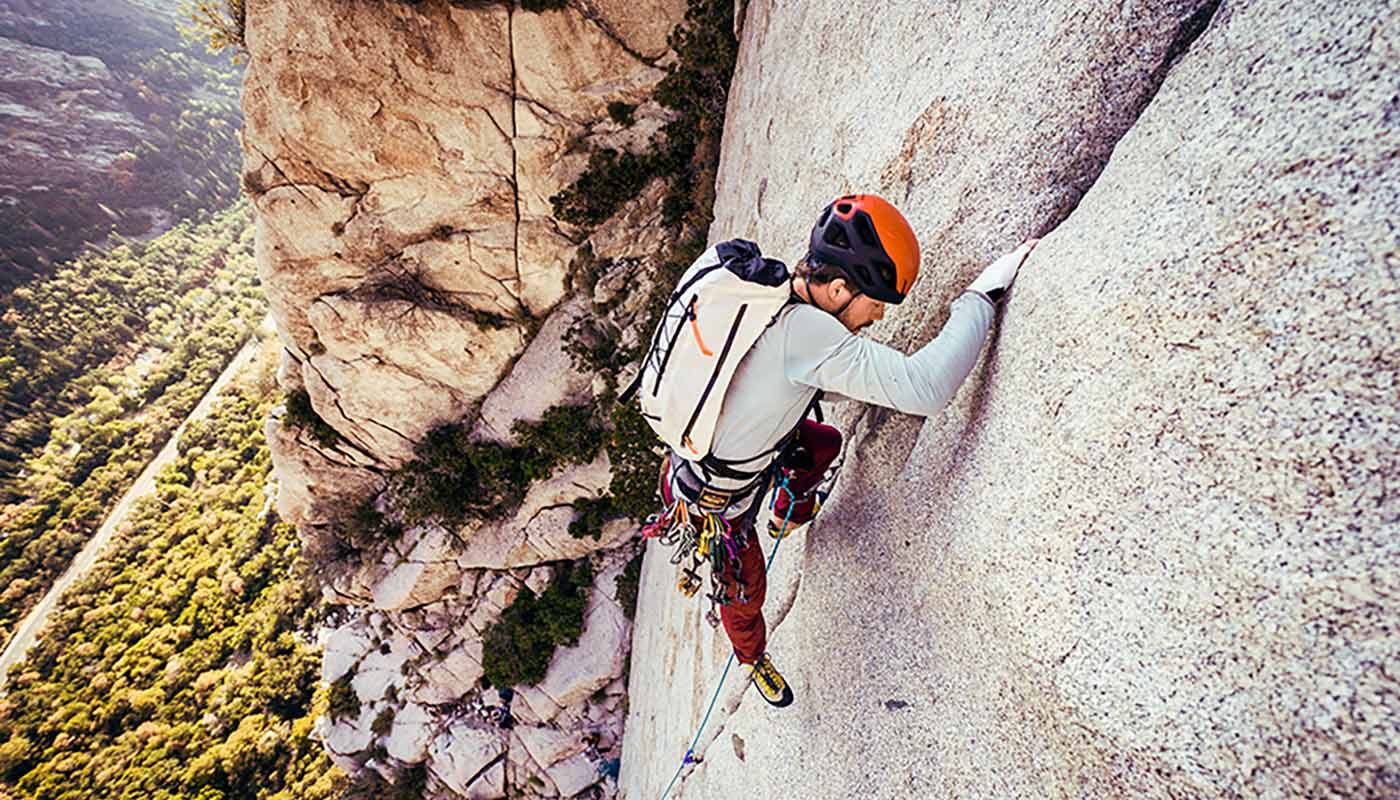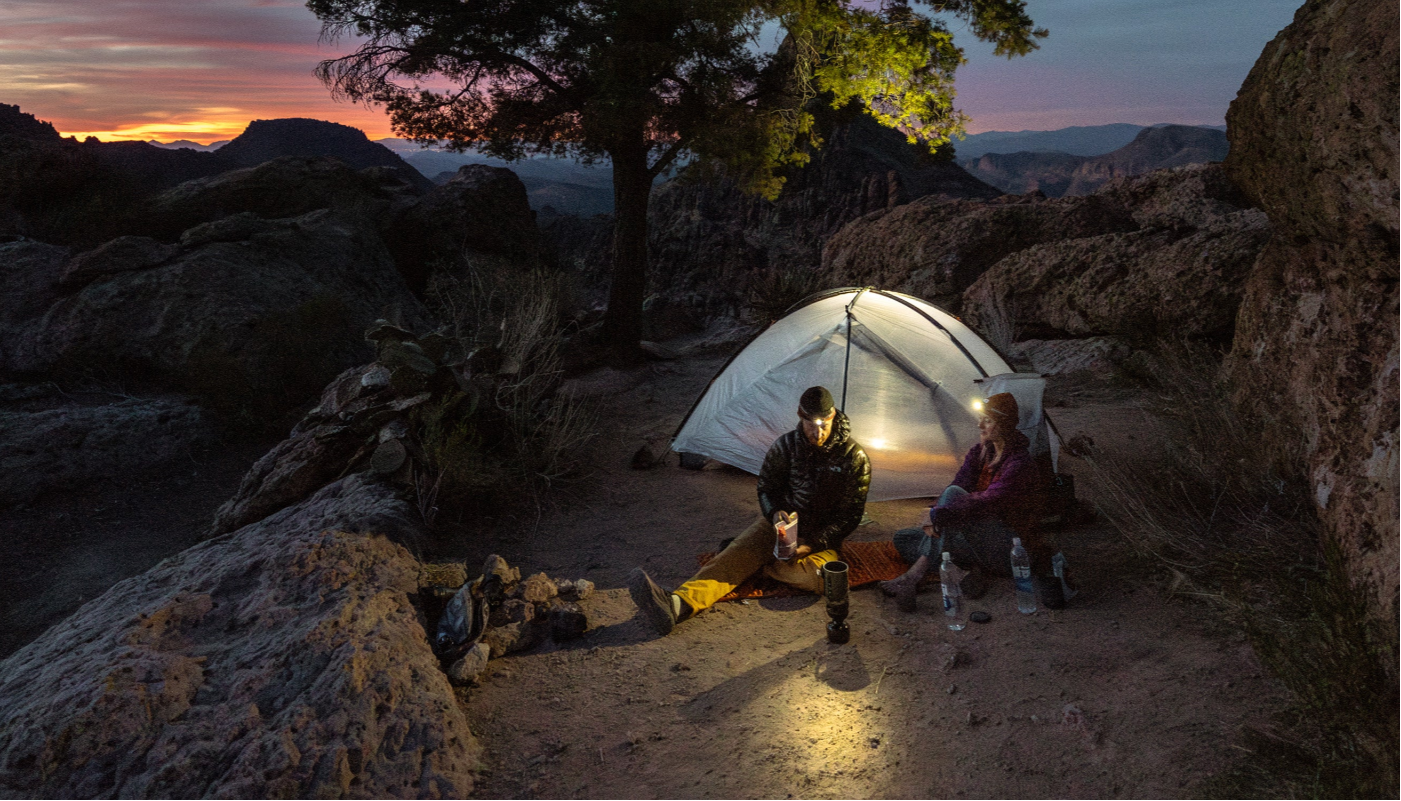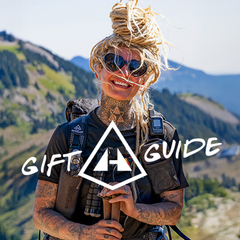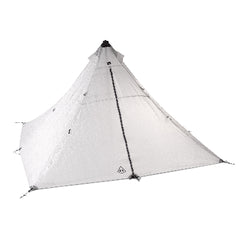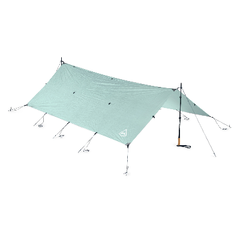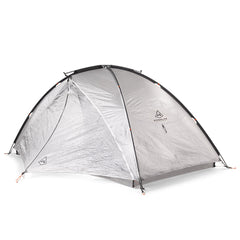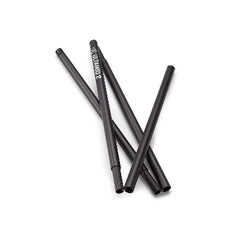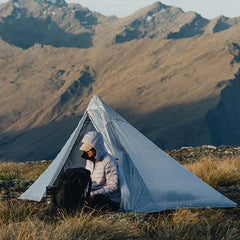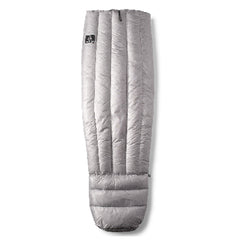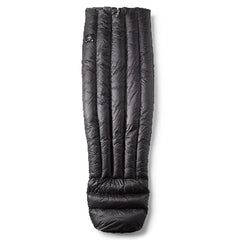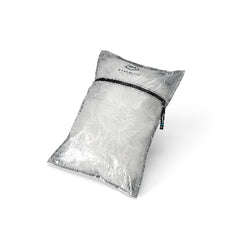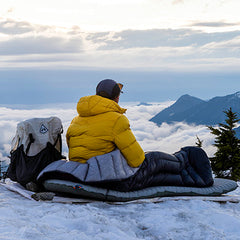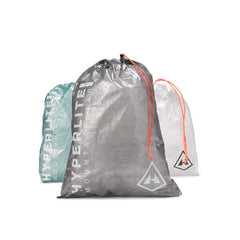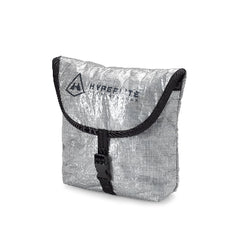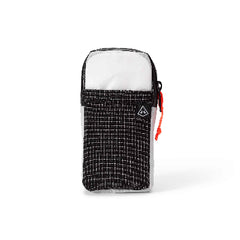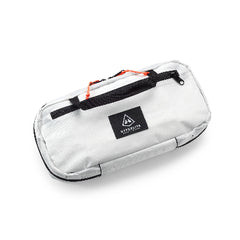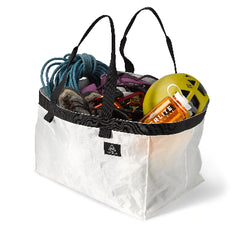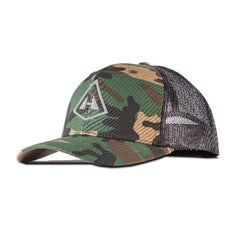Words and Photos by Luke Stetson @luke.stetson
Growing up, I remember getting outdoor gear magazines in the mail, which always contained beautiful adventure photography. These magazines displayed people climbing huge rock faces, backpacking in remote areas, and just doing awesome things outdoors in general. I think looking at these magazines as a kid may be partially what sparked my interest later in life to pursue adventure photography. One location that always stood out to me in these magazines was the Patagonia region. Known for its incredible rock faces, huge glaciers, and vast wilderness, I knew I had to visit at some point in my life. So at the end of 2024, while unemployed and organizing a trip, I knew exactly where I needed to go —Argentine Patagonia to witness the magnificent Fitz Roy, Cerro Torre Massif, and the Southern Patagonia ice sheet. I ended up traveling to multiple countries in South America, but Patagonia was really the main focus. The plan was to sleep in lodges or hostels for a few nights, but mostly camp out to get the full Patagonia wilderness experience. In total, I stayed in Patagonia for two and a half weeks and slept in a tent the majority of that time.
HUEMUL CIRCUIT
Like many other people who travel to Patagonia, I was set on seeing Fitz Roy and the Cerro Torre Massif. What I had not heard of until diving deeper into my travel planning was the Huemul Circuit. I'm not even sure how I heard about this route, but as soon as I learned of it, I knew I had to backpack it. The trek meanders through old forests and grassy valleys, over mountain passes, and includes tons of breathtaking glacier views. I knew I was capable of doing this trek solo, and I had all of the gear; however, something told me it would be smart (and more fun) to do this with someone else. But who else could I go with if I were traveling solo? I decided a good option was to post a comment on AllTrails in the reviews section of the trail map. I left the dates I was going to be in Patagonia, my ideal timing for the trek, and my Instagram username. Within just a few days, I heard back from a few people. One person in particular reached out via Instagram direct message when I was on the bus to El Chalten. His name was Hank, and similar to me, he had been traveling South America solo for a good while and had ended up in El Chalten. He had also heard this trek was amazing and wanted to do it with another person. I arrived in El Chalten and explored the town for one day before meeting up with Hank to discuss our plan over some coffee. We got along well and realized we'd make a great team. After some research, we noticed the weather forecast for the next few days actually looked perfect. So after being in El Chalten for not even 24 hours, I had agreed to trek and sleep in a tent with a complete stranger I had just met, and we were starting the very next day. Was this a smart idea? I was about to find out. For the remainder of that day, we rested and collected supplies we'd need for the four-day trip.
THE GEAR LIST
Hyperlite Southwest 55
Sleeping bag, air mattress, inflatable pillow
Two-person tent
Backpacking stove with propane, a lighter, and a 750 ML cup + spoon
Water bottles and filter
Trekking poles
Wool base layers + thin hat and gloves
Toiletries, first aid, sunscreen
Baseball hat and sunglasses
Emergency bivy
Headlamp with extra batteries
Hiking boots
Camera, batteries, portable charger, tripod
A few days' worth of food
Rain jacket
Insulated jacket
Fleece
Minimal clothes (pants, shirt, sun hoody and a few pairs of socks and underwear)
Stuff sacks to organize
Dry bag
Microfiber towel
Zipline harness system
DAY ONE
On day one, we met at the trailhead not far from town and began the trek. We had checked the weather forecast for the upcoming week, and it was supposed to be very windy on our first day, but then would die down by the end of our second day. This seemed to be a pretty accurate forecast because day one was extremely windy. Walking through a valley where there should have been minimal wind, I felt like I was on the summit of Mt. Washington. Multiple times, I almost lost my hat when an unexpected gust hit us head-on. Luckily, day one was the easiest hiking day, so we got to our campsite and mostly out of the wind somewhat quickly. Once we set the tent up, it started raining, which had both Hank and me questioning our decision to start the trek that day. We sat in the tent for a long time wondering if we had picked the correct weather window or if we'd have to bail. When the storm finally slowed down a little, we cooked up some dinner before getting to bed, hopeful for nice weather the next day.

DAY TWO
The next morning, though it was still breezy, the wind had died down significantly, and the mountains were clear and sprinkled in a new dusting of snow. Hank and I started our day with some warm breakfast before packing our bags and hitting the trail. We followed a river from our tent site up to a glacial pond, then scrambled over some cliffs that had been visibly smoothed by a glacier. Eventually, we made it to a canyon section where there was a zipline river crossing, and although we had a harness system with us, we opted to cross the river by foot further upstream. We removed our boots and socks and crossed the absolutely frigid glacial water. By the time I reached the other side, I could no longer feel my toes, and they were bright red. We dried our feet and let them sit in the sun briefly before putting our boots on and getting back on trail. After a bit of climbing, we got views of some extremely jagged peaks in the distance and a large glacier in front of us. This was my first time ever seeing a glacier of that size, and I was blown away by it. The ice started on a huge mountain far in the distance and blanketed almost everything in front of us.


We carefully walked down the trail containing lots of scree, down to the glacier, where we would walk across a section of it. There were a few trickles of water atop the glacier that we drank from –my first sips of glacial water. We then started walking across a section of the glacier, navigating around crevasses and taking in the unbelievable scenery. Once we got off the glacier, we had more amazing views as we walked up another steep section of trail. We spent the next few hours climbing up to Paso Del Viento, where we had our first look at the Southern Patagonia ice sheet. Its sheer size was unbelievable and completely dwarfed the glacier we had been amazed by just moments ago. I had come to Patagonia mostly for the mountains, but this ice sheet absolutely blew me away and is one of the more memorable moments of the trip. Almost everything in sight was covered in flowing glacial ice, which was hard to comprehend. Hank and I made the descent from Paso Del Viento to our tent site with views of the ice sheet the entire time. Once at the campsite, we set up our tent and had some snacks while still in awe of the amazing day we had experienced.

Hank avoiding a crevasse while walking across the glacier

 Southern Patagonia Ice Sheet
Southern Patagonia Ice Sheet
 Our tent site on night two
Our tent site on night two
DAY THREE
The next morning, the air was cold, but there was hardly any wind. We made our breakfast while shivering and packed up camp to hit the trail. I shouldn't have been so surprised by the cold, considering there was a massive ice sheet nearby, but it was surprisingly cold, with it being summertime in Patagonia. Hank and I hit the trail a little later, around 10 am, which had incredible views from the very first steps. This day consisted of walking beside the glacier to our next campsite located on Lago Viedma. Hank and I walked along rocky ledges and beautiful grasslands with unbelievable views of jagged snow-capped peaks and the massive glacier below us.


Once we got closer to the campsite, we made our way up a steep and very windy pass before descending to our campsite on the lake. The descent was easily the steepest, sketchiest section of trail I have ever been on. Unlike my familiar trails back home in the Northeast, this trail had zero rocks and was all loose sand and gravel. This, paired with an extremely steep slope, meant every step had uncertainty. There were multiple ropes on the trail to help you rappel down the slope, and without these ropes attached to trees and roots, the trail would be a death sentence. After what felt like hours of climbing down the sketchy mountain, we finally made it to our campsite, which was unlike anything I'd ever seen before. The site was tucked into the forest a few paces from a rocky beach, which had gigantic icebergs sitting just offshore. I could not believe the sheer size of the ice in front of me. Blue and white chunks of ice, larger than a house, sat in the water in front of us. That evening Hank and I observed a beautiful orange sunset over the icebergs and made a large dinner with some of the extra food we brought since it was our last night. I went to bed amazed by what I had seen in the last three days, and I couldn't believe I still had two more weeks in this beautiful place.

Icebergs in front of our tent site from above

Iceberg view from the beach
DAY FOUR
Day four started with me getting up early to try to capture some photos of the icebergs in the morning light. After getting carried away and shooting for over an hour, I went back to the tent to make breakfast and pack up camp. This was the last day of the trek, which meant we'd be walking through scenic grasslands back to Chalten. The trail was relatively flat, but on some of the few uphill sections, we saw huge condors resting on boulders nearby, which made us forget about our tired legs. There was also a section of trail that crossed a pretty large and fast-moving glacial river where we had to zipline across. We had one harness that we shared between us to get across the river. I managed to get stuck in the middle of the zipline because the rope that is used to pull the trolley piece from either side of the river got stuck on a rock. Once we got across the river, we kept a steady pace back to El Chalten. At a certain point, we recognized some of the mountains surrounding the town and knew that we must be getting close. Eventually, we got to the main road leading into El Chalten and got clear views of the magnificent Fitz Roy, which was the perfect end to an unforgettable backpacking trip.


Although I had just gone on one of the most beautiful backpacking trips of my life, my time in Patagonia had only just begun. I still had about two weeks to explore once I returned to town from the Huemul Circuit. I had booked a hotel for the night I returned from the Huemul trek and the last two nights before I would leave Patagonia; the rest of the time I would be in a tent. This meant I would have plenty of time to slow things down and truly enjoy the beauty of Patagonia without rushing to different locations. Being in a tent all that time also meant I could easily catch lots of sunrises and sunsets since I'd be much closer to the mountains than if I stayed in lodging in town. My plan was to hike from El Chalten into the D'Agostini tent site and stay there a few nights before moving to the Poincenot tent site, then finally relocating to the Laguna Capri site for a few days. While at the D'Agostini tent site, I had unbelievable views of the Cerro Torre Massif, just a few steps outside my tent. Every morning I would wake up for sunrise to watch as the rock spires turned a vibrant orange in the morning light. I spent countless hours running around with my camera, capturing different shots of these wild-looking peaks, in addition to sitting still and quietly observing the landscape without a camera.

Rock hopping in front of the Cerro Torre Massif
 Cerro Torre Massif at sunrise
Cerro Torre Massif at sunrise
 After a few nights at the D'Agostini tent site and tons of time spent observing and photographing the Cerro Torre Massif, I figured it was time to relocate so I could do the same for the Fitz Roy Massif. I packed up my things and made the walk to the Poincenot tent site to try a new location. While at the Poincenot campsite, I spent a lot of time exploring nearby streams and lagunas, which gave me lots of different perspectives of Fitz Roy. I was also able to perfect my self-portrait skills with all of the great scenery and free time I had. Similar to my time around the Cerro Torre Massif, I woke up for sunrise to observe Fitz Roy in the glowing sun, but unfortunately, my sunrise luck was running out, and there were clouds on the horizon most mornings.
After a few nights at the D'Agostini tent site and tons of time spent observing and photographing the Cerro Torre Massif, I figured it was time to relocate so I could do the same for the Fitz Roy Massif. I packed up my things and made the walk to the Poincenot tent site to try a new location. While at the Poincenot campsite, I spent a lot of time exploring nearby streams and lagunas, which gave me lots of different perspectives of Fitz Roy. I was also able to perfect my self-portrait skills with all of the great scenery and free time I had. Similar to my time around the Cerro Torre Massif, I woke up for sunrise to observe Fitz Roy in the glowing sun, but unfortunately, my sunrise luck was running out, and there were clouds on the horizon most mornings.




There were two mornings, however, that I will probably remember for the rest of my life, when Fitz Roy was the most vibrant orange color I have ever seen in nature. One of those mornings, I ditched the tent and cowboy camped next to a glacial laguna directly below Fitz Roy. I fell asleep under the stars with Fitz Roy looming above me and woke to the face starting to glow in the morning light. I could not believe that a rock appearing so grey in the daylight could look so bright orange at first light. I sat in amazement as the sun lit Fitz Roy on fire and listened to the sound of the wind and the nearby glacial stream rushing by. As the sun rose in the sky, its warmth caused the hanging glacier above the Laguna to crackle and settle like it was a living being waking from a night's rest. I sat in awe, feeling extremely grateful to be in one of the most beautiful places on the planet with not another human in sight –just a few condors soaring above.

Cowboy camping below Fitz Roy
 Fitz Roy at first light, taken just a few minutes after the previous photo
Fitz Roy at first light, taken just a few minutes after the previous photo
One separate morning while camping at the Laguna Capri tent site, I climbed up one of the nearby hills at sunrise and captured Fitz Roy in the morning light with a beautiful lenticular cloud above. Once again, I was in awe of where I was, and I was sad that I would have to leave soon.

Fitz Roy in the morning sun with a lenticular cloud above
 Patagonia is an unbelievably beautiful place that exceeded my expectations. In a world where the impact of humans can be seen in almost every corner, it is nice to visit a place like Patagonia that is still untouched for the most part. Hopefully, it can stay that way.
Patagonia is an unbelievably beautiful place that exceeded my expectations. In a world where the impact of humans can be seen in almost every corner, it is nice to visit a place like Patagonia that is still untouched for the most part. Hopefully, it can stay that way.
